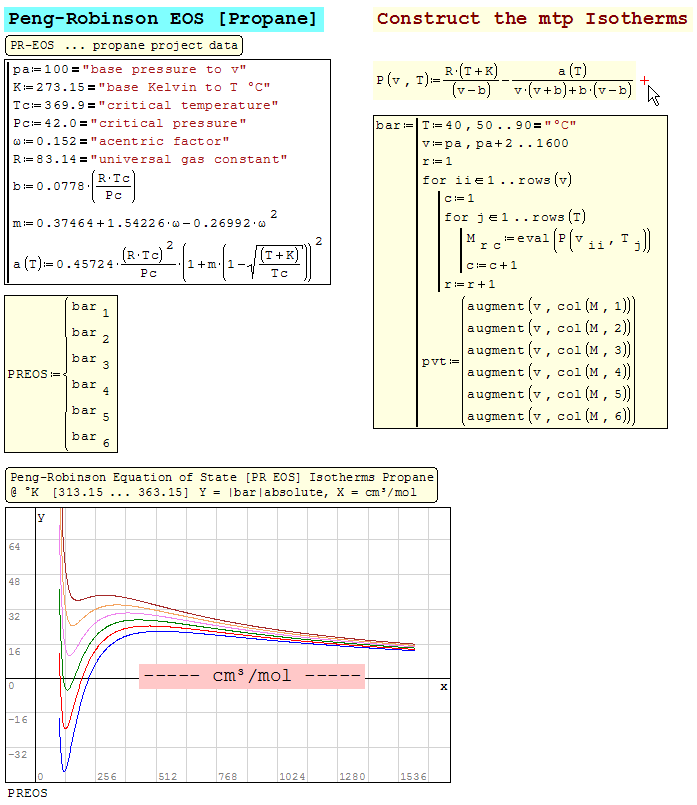Peng Robinson EOS - Messages
WroteBut this is in some of your new files. Please re-download what you've posted here.
In the last screenshot, where you do re-define T and P as vectors after defining T.air and P.air, the T:=0 and P:=0 are redundant.
You're right, uploaded file have T.air P.air duplicated, and not the couples T, T.air P, P.air. That's my bug. Another one, I go to win a big server.
Alvaro.
Or here, the diagrams for PR in mathcad: https://www.ptcusercommunity.com/message/424574#424574
Best regards.
Alvaro.
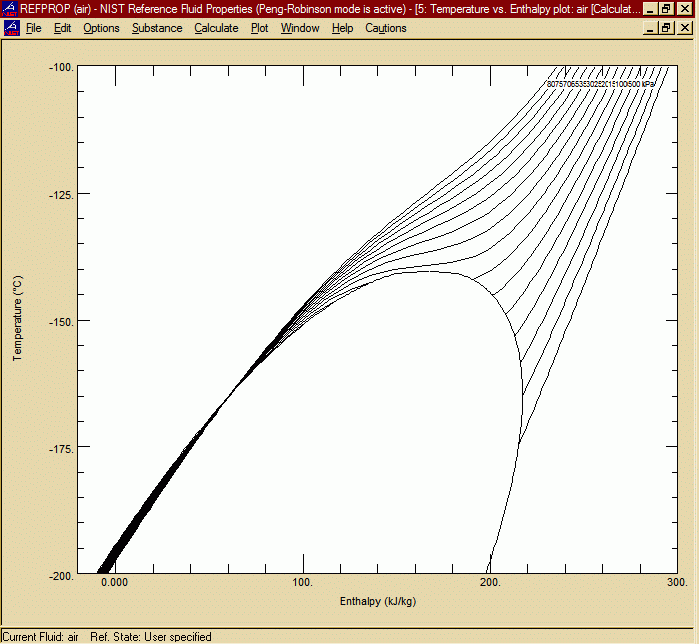
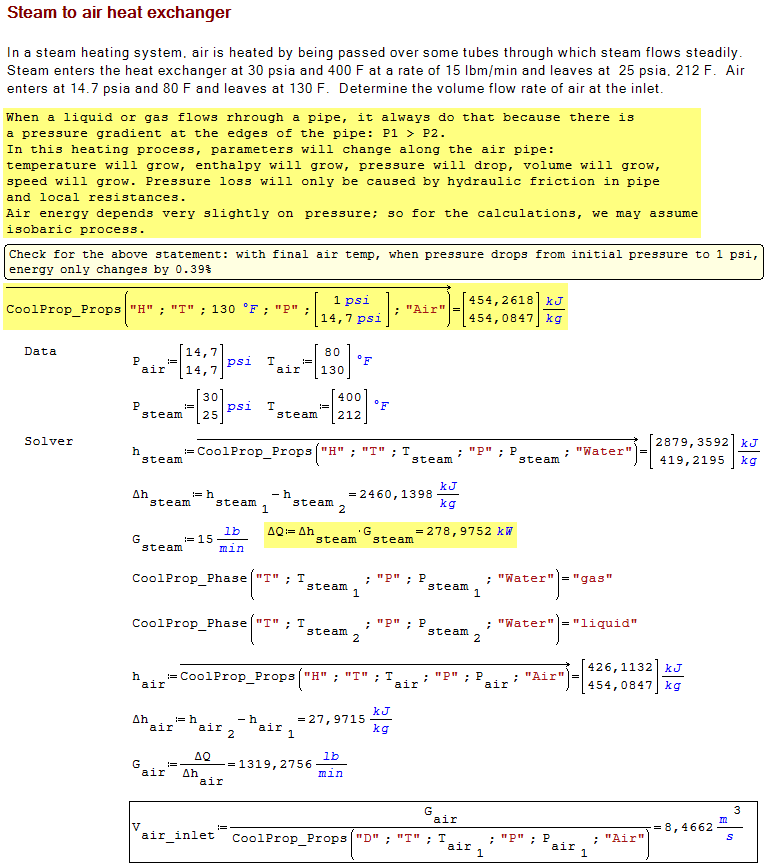
MassAndEnergyInCV_Mike.sm (20.83 KiB) downloaded 744 time(s).
Edit: I see that the air flows outside the tubes; however, the said holds true: the pressure drop across the starting and ending points cause air flow; this pressure drop may be ignored for the task. The losses that are ignored here, constitute much higher indeterminacy.
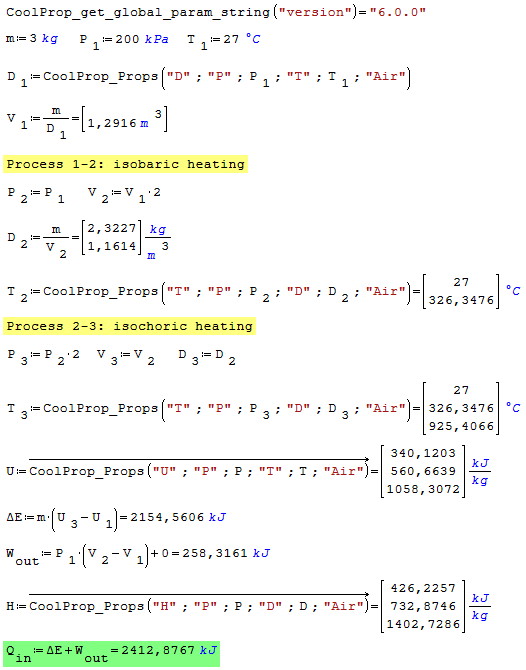
Edit: I'm sorry, uploaded some utter garbage. Updated file.
Air in piston-cylinder with stops.sm (16.68 KiB) downloaded 796 time(s).
Please notice that you had some errors, particularily in calculation of L.
Best regards.
Alvaro.
http://en.smath.info/forum/yaf_postst7476_SMath-Studio-0-98-5953--19-April-2016.aspx
WrotePlease notice that you had some errors, particularily in calculation of L.
Too much for a monday morning, but most interesting the global collection.
Sure L ia a problem: denominator is complex. That kind of gigantic project
must be first constructed modular and sanity checked to extremas.
Why zillions of gyzmas #####... If they do nothing, why should they do ?
Jean
PR_comments.sm (25.86 KiB) downloaded 764 time(s).
Take into account ref point's h and s non-zero values.
+Some refactoring
This is meant to be some framework.
To test, the specific reference to Peng-Robertson formulation used is required, because there are quite a number of those in literature.
WrotePR_work_Mike2.sm (48.83 KiB) downloaded 801 time(s).
Take into account ref point's h and s non-zero values.
+Some refactoring
This is meant to be some framework.
To test, the specific reference to Peng-Robertson formulation used is required, because there are quite a number of those in literature.
Hi Mike. For this is put images from RefProp about the ref states. Hysys use another method, and have H(T), gibss free energy and vapor pressure constants which uses in conjuntion with the PR EOS.
Attached, a table with some other values for critical values and Cp of ideal gas.
Righ now have not to much time to analyze your file (and probably need to install other version, because give me errors).PR.zip (35.51 KiB) downloaded 249 time(s).
Best regards.
Alvaro.
PR.zip (35.51 KiB) downloaded 249 time(s).
I didn't meant numbers, I meant formulas.
Literature gives a number of various flavours of Peng Robinson's. They differ slightly in their coefficients, and organization of calculations (although give similar results). I don't mean "enhanced" versions. So, to truly check your implementation (which mine is based upon), I asked for source of your formulas.
WroteAlvaro,
I didn't meant numbers, I meant formulas.
Literature gives a number of various flavours of Peng Robinson's. They differ slightly in their coefficients, and organization of calculations (although give similar results). I don't mean "enhanced" versions. So, to truly check your implementation (which mine is based upon), I asked for source of your formulas.
Ah. I provide that for set some others compounds for check. Sources are: my version in mathcad: https://www.ptcusercommunity.com/message/424574#424574 , Carl Lira excel's http://www.egr.msu.edu/~lira/computer/EXCEL/PREOS.XLS , ascend4: http://ascend4.org/PengRobinson_EOS_in_FPROPS hysys documentation (from version 2 to 8) and Cengel book: Thermodynamics.
Hysys folloy they own rules, ASHRAE are hard to implement. RefProp documentation have some information about the ref states: http://www.nist.gov/srd/nist23.cfm
Best regards.
Alvaro.
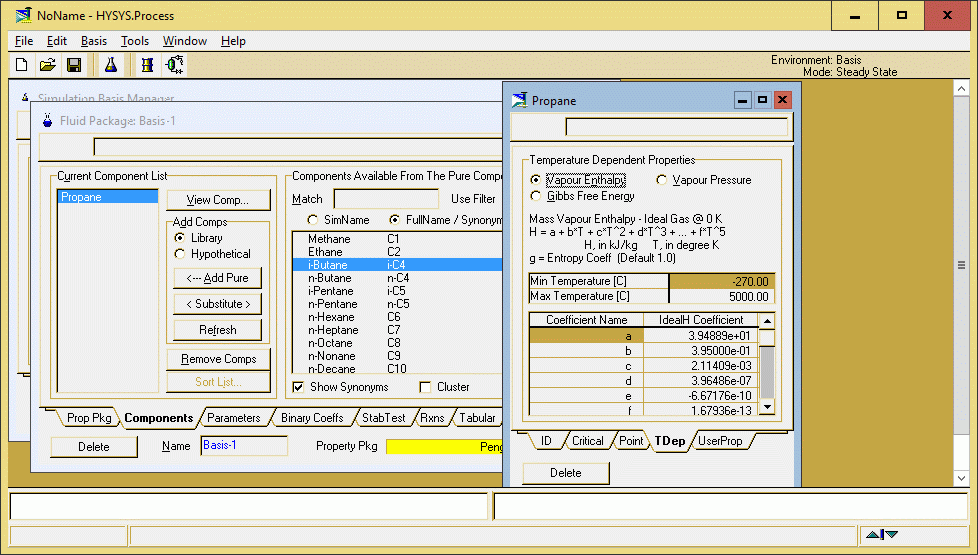
In my mathcad ws (not implemented yet in smath) I output also for vf, hf, uf, sf, vg, ... etc (f liquid phase, g vapor, in german). This is equivalent to f for x=0, g for x=1. I use Lee-Kesler eq for get the aproximate point in the change phase line, and root for the value, but I'm not convinced of this.
Best regards.
Alvaro.
Can't help, just good at making maths work in Smath.
In the attached, is as far as I can go [primer Edu.]
Jean
PR EOS.sm (125.06 KiB) downloaded 769 time(s).
- New Posts
- No New Posts


